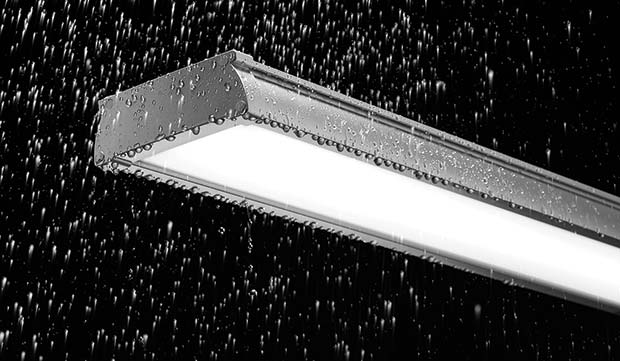Integrating controls into LED lamps multiplies the energy efficiencies, according to Saima Shafi, Sales and Marketing Director, LED Eco Lights
 Since 2006, we have seen great shifts in LED technology, delivering huge improvements in light output, colour rendering, reliability of electronic control gear and of course, vast difference in purchase prices. Whilst these improvements will doubtless continue, other exciting developments are taking place.
Since 2006, we have seen great shifts in LED technology, delivering huge improvements in light output, colour rendering, reliability of electronic control gear and of course, vast difference in purchase prices. Whilst these improvements will doubtless continue, other exciting developments are taking place.
Manufacturers are exploiting the inherent controllability of LED technology by integrating LED lamps and luminaires into smart buildings technology. An obvious first step is to link lighting with sensors – either built-in or connected.
Integrating motion sensors into lighting directly massively reduces the complexity compared with the traditional approach of using external occupancy sensors. Thermal sensors can also be added to improve detection of personnel in specific areas. Simplicity brings the rewards of enhanced reliability as well as performance – not to mention the savings in cost. Older solutions earned notoriety amongst users, who frequently had to wave their arms or walk around in order to bring the lights back on. Siting position and thermal sensors with the lighting makes this a thing of the past.
Sensors that measure ambient light level similarly offer improvements over traditional timed switch-on/switch-off arrangements. Why turn the lights out at 7pm, just because it’s assumed that everyone has gone home? Why wait until 7am to turn them on?
A further advantage of integrated sensors is it removes the need for separate installation of PIR detectors and the like. Improvements in control and automation can be added step-bystep, instead of involving multiple contractors and projects. This expands the potential for including lighting into building-wide automation.
Smart technology starts learning for itself
This would allow lighting to be driven by users’ habits. For example, lighting units can be grouped together and communicate with each other so they perform functions in harmony. Lights can be programmed to dim up and down according, not only to current but also to anticipated occupancy levels. Another possibility is to switch lights on ahead of occupants moving through a long corridor, then dimmed or switched off behind. LED lighting is well suited to these applications, having many significant advantages over more conventional technologies.
LEDs are flicker-free, combatting the common problem with fluorescent lighting. They present no issues with being turned on and off. Another example is using central automation to control lighting in response to emergencies. For example, all lights in a building be switched on full in the event of an evacuation, with the building automation system switching-in backup power as required. These smart luminaires can also be grouped together so banks of units can be controlled to the same parameters. A pre-set level of lighting can be maintained across the whole area if required.
Systems like the new Goodlight architectural lighting range of modular LED luminaires can be attached to intelligent controls that learn how the areas in an office are used, and adjust the lighting accordingly.
In the smart building, control of lighting now goes hand-in-hand with some level of monitoring to deliver the necessary energy saving benefits. Major energy users are – or will be – finding ways to monitor their lighting usage not only to reveal patterns which will help reduce consumption, but also to have a better understanding of how their buildings are being used, which can help to identify all sorts of userrelated efficiencies.
What is the ROI?
Measuring return on investment is not simple. Estimating the ROI of a future installation project is especially challenging, because every building is individual. Potential adopters should look first at the returns enjoyed by organisations that have already made the switch to LED technology.
Evaluation of Goodlight retrofit LED lamps and luminaires has demonstrated energy savings up to 85%. In addition to this, maintenance savings of up to 100% can be made, and typical return on investment calculations show full payback within three to 36 months. To refine their estimates, new installers will typically calibrate their early estimates with real data from a pilot installation.
Naturally, there is some resistance to adopting this relatively new technology. In the past, lighting controls have been standalone systems, which are deemed quite expensive, delivering payback over decades. Conventional wisdom is that such an approach is more pertinent for fancy new builds than retrofits into existing buildings.
But integrating the control system within the light itself dramatically changes this model. Smart LED lamps are already relatively inexpensive, making automated lighting highly accessible. In the future, as integrated smart moves from an added extra for a lamp to a standard feature, making energy efficient lighting even more attractive not only to cost-conscious landlords, owner occupiers and facilities managers but also to users, who ultimately will gain control of the lighting in their surroundings.
GOODLIGHT
Tel: 01276 691 230
Email: sales@goodlight.co.uk




Comments are closed.